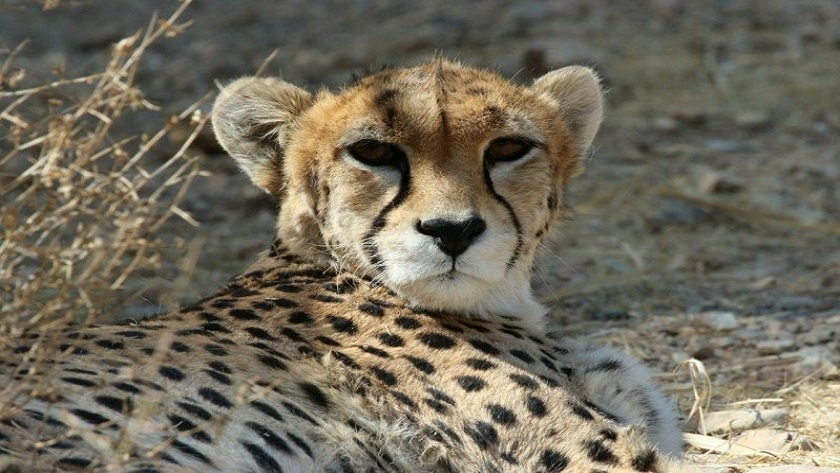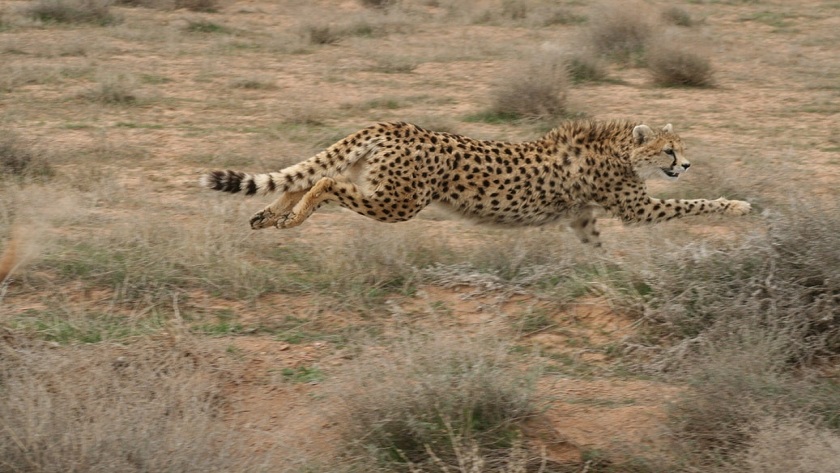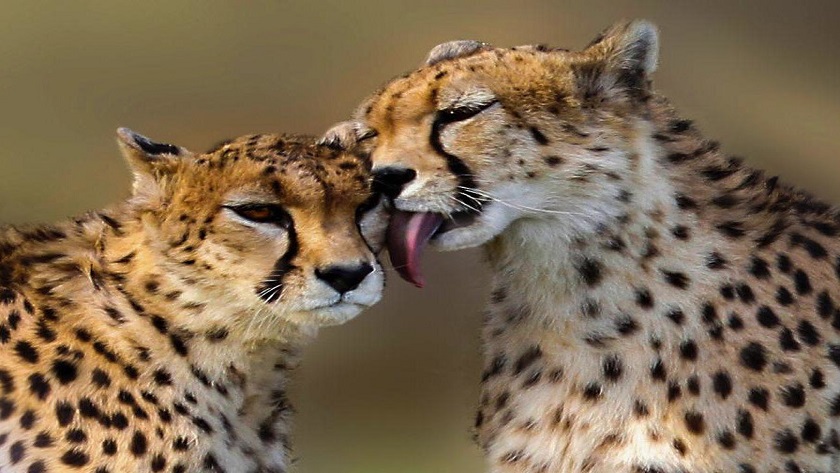Iran Press/ Iran News: Iran maintains a diverse climate and one of the richest bio-diversities in the world. According to countless ecologists, Iran is among the ten superior countries around the world in regard to bio-diversity.
The habitat of the Asian cheetah or Iranian cheetah is desert areas and its species has been on the verge of extinction for several years. According to official research, the number of Iranian cheetahs is approximately 70 to 100 in the central desert areas such as Miandasht, Naybandan, Darreh-e-Anjir, and Touran.
Asiatic cheetahs once lived across the grasslands of India, Pakistan, Russia, and the Middle East, but have been entirely wiped out except in Iran. The cheetah species is slightly different than those found in parts of southern Africa. Asiatic Cheetah currently has chosen the Islamic Republic of Iran’s deserts as its habitat and therefore it seems more appropriate to refer to these animals as Iranian Cheetahs.
The Asiatic cheetah is a subspecies of the spotted big cat with a smaller stature and thicker fur than African cheetahs, per the International Society of Endangered Cats. The animals once prowled through India, Pakistan, Russia, Iran, and the Middle East but now only remain in Iran after hunting, habitat loss, and lack of prey pushed the subspecies to the brink of extinction.

Related News:
Iran's National Asiatic Cheetah Day
Cheetahs are included within the feline group. Given Cheetahs’ long hands and legs, thin and stretched body, and broad chests, they highly resemble Persian Greyhounds. But, in contrast to canines, Cheetahs have small heads, short necks and jaws, and small and round ears. Many mistake Cheetahs for leopards. The stark difference between these two animal species is observed in the shape of their spots. In Cheetahs, spots are round and filled, while spots in leopards are hollow and large. The presence of a black stripe that stretches from the inner corner of Cheetahs’ eyes, parallel to their nose, extending to the side of their lips is one of the distinct features of Cheetahs.
Possession of a flexible vertebral column, large liver and heart, wide nostrils, high-capacity lungs, and a muscular and thin body, has turned Cheetahs into the fastest predators in the world. Cheetahs can sprint up to more than 90 kilometers per hour. This animal can reach the speed of 70 kilometers per hour within a period of two seconds, which in fact is unrivaled compared to the best racing cars in the world. Meanwhile, Cheetahs can maintain this speed at a short distance; given that running at a high speed takes a long of energy for Cheetahs. Hence, while hunting, this animal should make calculated moves in order to catch the prey within the very first several hundred meters.

Related News:
Wonders of nature in Iran's Bafgh desert
Cheetah’s favorite prey is antelope. In Iran, Cheetahs hunt deer, chinkaras, ewes, rams, goats, rabbits, foxes, and jackals. Maybe one of the reasons behind the rarity of Iranian Cheetahs is a fall in the number of their prey.
One of the other reasons behind a fall in the number of Iranian cheetahs is related to their reproduction model. The pregnancy of these Cheetahs lasts 95 days and the cubs usually stand at four or five in number. Meanwhile, female cheetahs are the ones who choose their partners; which has, in turn, led to a low reproduction rate among Cheetahs that are held captive.
In the past two decades, state-run organizations and NGOs of the Islamic Republic of Iran have focused on this valuable animal. On this basis, locals are taught to allow Cheetahs to hunt sheep in order to save Cheetahs from possible extinction, given that Cheetahs, unlike wolves, do not attack all existing sheep.

In 2001, a key agenda for the conservation of the Asian Cheetah (Iranian Cheetah) was launched in collaboration with the United Nations and the Environmental Protection Agency. For this purpose, 5 areas were selected that had the highest number of cheetahs, and about 80% of cheetahs roam Naybandan in Yazd province.
Also in some parts of Iran, the habitat of Asian cheetah (Iranian cheetah) such as Yazd, Semnan, Isfahan, Kerman, Khorasan, a part of the high school textbooks is designated Asian cheetah describing the value of this endangered species in order to help to preserve them. In the 2014 FIFA World Cup, the uniforms of the players of Iran national team were embroidered with Iranian Cheetah.
Iran considers its Cheetah an important part of its natural and cultural heritage and it has now become a symbol of the country’s conservation efforts. Iran’s Department of the Environment (DOE) partnered with various other groups including the Wildlife Conservation Society and the United Nations Development Program to create a comprehensive conservation program.
219
Read More:
Chabahar Martian Mountains; amazing natural phenomena
Ashkan Salehian

